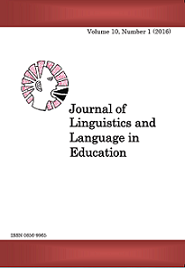The Subjunctive Mood In Kikisi, Kindendeule and Chingoni1
Abstract
In the Bantu languages of Kikisi, Kindendeule and Chingoni, the subjunctiveis a grammatical category that stands in contrast with the indicative mood.
Morphologically, the subjunctive is characterized by the verbal suffix -e (or
some other variants), absence of tense marking and the obligatory presence of
the subject and/or object marker. Two types of subjunctive are illustrated
(Quer, 2005; Stowell, 1993): (i) Intentional subjunctives that are triggered by
matrix predicates and (ii) polarity subjunctives that are licensed by some
operator. The subjunctive is associated with irrealis-inducing environments
such as irrealis-inducing adverbs and complements of manipulative verbs
(Givón, 1994). This paper argues that the subjunctive ambiguously exhibits
Inflection or Tense features as well as COMP features. With respect to
Inflection features, the subjunctive is in complementary distribution with
tense marking. However, it displays COMP features in its selectional relations
with the superordinate volitional and directive predicates. This ambiguity is
accounted for if we adopt Rizzi ' s (1997) proposal of an articulated CP. The
Inflection features are FinP features and the COMP features ForceP features,
which are all on the left periphery.
Published
2018-01-03
Issue
Section
Articles
License
Copyright © by Department of Foreign Languages and Linguistics, University of Dar es Salaam
All rights reserved. No part of this publication may be reproduced or transmitted in any form or by any means, electronic or mechanical, including photocopying, recording, or any information storage or retrieval system, without permission in writing from the publisher, except for short extracts in fair dealing, for research or private study, critical scholarly review or discourse with an acknowledgement.


